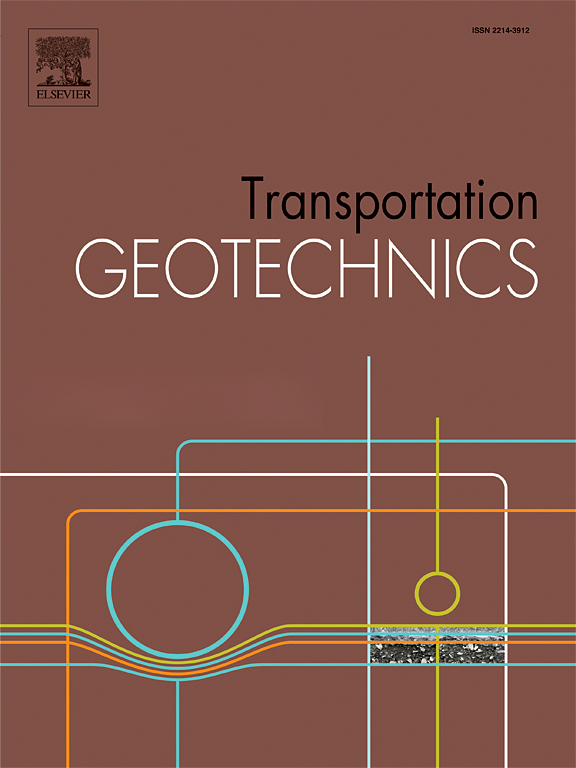Semi-analytical solution for the transient response of saturated viscoelastic porous media based on fractional Poynting-Thomson model
IF 4.9
2区 工程技术
Q1 ENGINEERING, CIVIL
引用次数: 0
Abstract
The vibration and deformation of subgrade soil under the dynamic load is the main research topic in transportation geotechnics, yet existing studies rarely provide analytical solutions for viscoelastic transient response problems. Building on the Biot wave equations and considering the material’s compressibility, this work introduces the fractional Poynting-Thomson viscoelastic model to establish a transient response model for a saturated viscoelastic single-layer porous medium under typical boundary conditions. By integrating the state-space method, Laplace transform, and the elasticity-viscoelasticity correspondence principle, an analytical solution in the Laplace domain is derived. Employing the inverse Laplace transform, the time-domain solution to the original problem is obtained. The correctness of the solution is verified through comparison with existing solutions. Analysis of numerical examples indicates that the fractional time parameter significantly influences the medium’s long-term response. The dash-pot viscosity coefficients have a pronounced effect on the hysteresis of wave.
求助全文
约1分钟内获得全文
求助全文
来源期刊

Transportation Geotechnics
Social Sciences-Transportation
CiteScore
8.10
自引率
11.30%
发文量
194
审稿时长
51 days
期刊介绍:
Transportation Geotechnics is a journal dedicated to publishing high-quality, theoretical, and applied papers that cover all facets of geotechnics for transportation infrastructure such as roads, highways, railways, underground railways, airfields, and waterways. The journal places a special emphasis on case studies that present original work relevant to the sustainable construction of transportation infrastructure. The scope of topics it addresses includes the geotechnical properties of geomaterials for sustainable and rational design and construction, the behavior of compacted and stabilized geomaterials, the use of geosynthetics and reinforcement in constructed layers and interlayers, ground improvement and slope stability for transportation infrastructures, compaction technology and management, maintenance technology, the impact of climate, embankments for highways and high-speed trains, transition zones, dredging, underwater geotechnics for infrastructure purposes, and the modeling of multi-layered structures and supporting ground under dynamic and repeated loads.
 求助内容:
求助内容: 应助结果提醒方式:
应助结果提醒方式:


